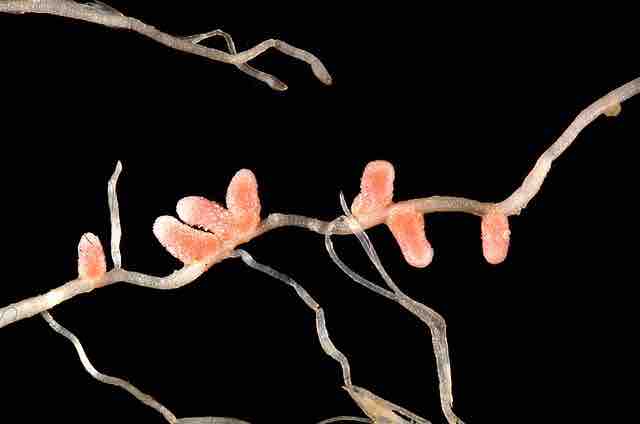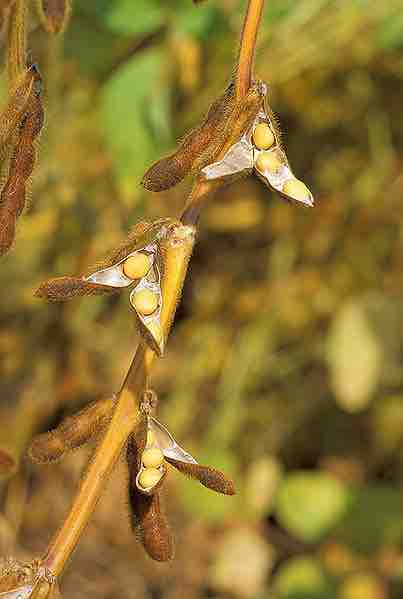Legumes and their Nitrogen-Fixing Bacteria
Many legumes have root nodules that provide a home for symbiotic nitrogen-fixing bacteria called rhizobia. This relationship is particularly common in nitrogen-limited conditions. The Rhizobia convert nitrogen gas from the atmosphere into ammonia, which is then used in the formation of amino acids and nucleotides .

Root Nodules
Root nodules are formed when nitrogen fixing bacteria called rhizobia enter the cells of a host plant.
Rhizobia normally live in the soil and can exist without a host plant. However, when legume plants encounter low nitrogen conditions and want to form a symbiotic relationship with rhizobia they release flavinoids into the soil. Rhizobia respond by releasing nodulation factor (sometimes just called nod factor), which stimulates nodule formation in plant roots. Exposure to nod factor triggers the formation of deformed root hairs, which permit rhizobia to enter the plant. Rhizobia then form an infection thread, which is an intercellular tube that penetrates the cells of the host plant, and the bacteria then enter the host plants cells through the deformed root hair. Rhizobia can also enter the root by inserting themselves between cracks between root cells; this method of infection is called crack entry. Bacteria enter the root cells from the intercellular spaces, also using an infection thread to penetrate cell walls. Infection triggers rapid cell division in the root cells, forming a nodule of tissue.
The relationship between a host legume and the rhizobia is symbiotic, providing benefits to both participants. Once the rhizobia have established themselves in the root nodule, the plant provides carbohydrates in the form of malate and succinate, and the rhizobia provide ammonia for the formation of amino acids. Many legumes are popular agricultural crops specifically because they require very little fertilizer: their rhiziobia fix nitrogen for them. Used properly some legumes can even serve as fertilizer for later crops, binding nitrogen in the plant remains in the soil .

Soy Beans
Soy beans are a type of legume crop that rely on rhizobia